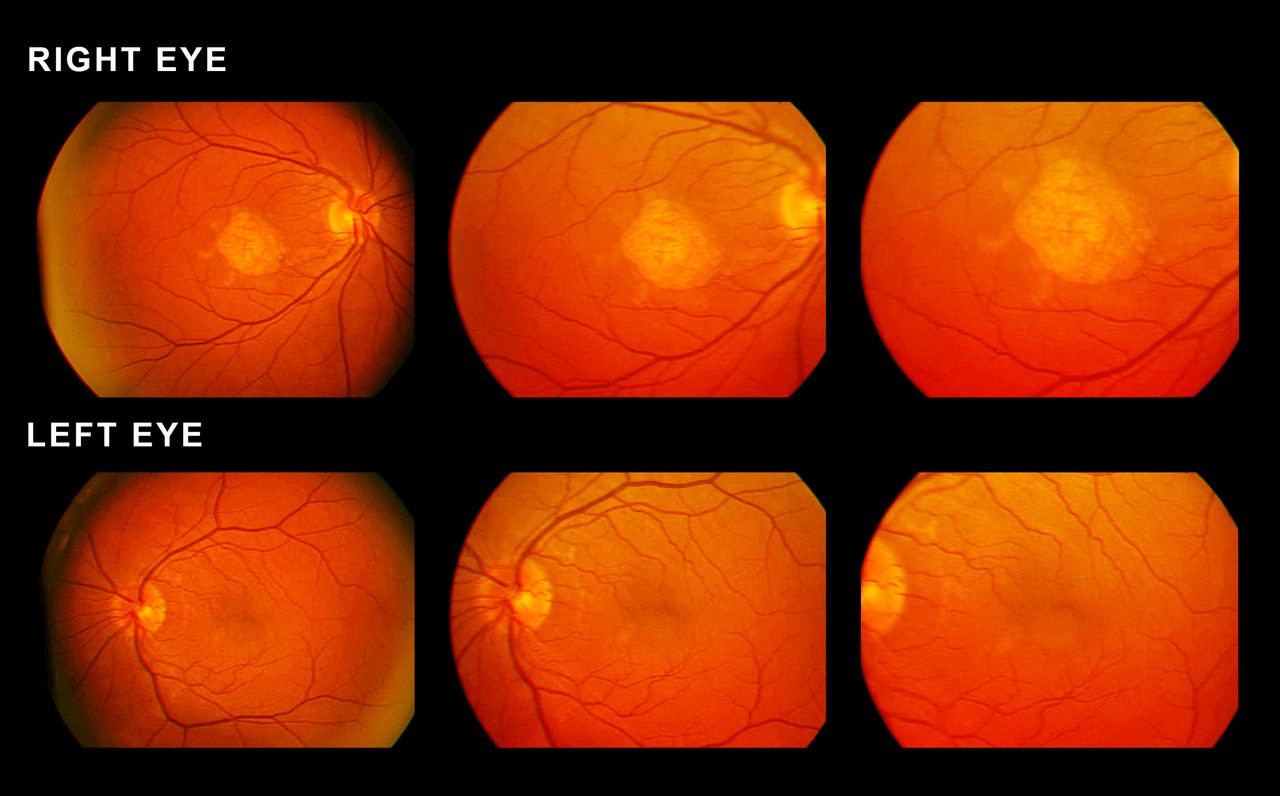What Is Macular Degeneration?

No one knows exactly what causes macular degeneration, but obesity and high blood pressure are risk factors, along with age. Here’s what you should know.
As you age, your eyesight may decline. The two big risks are cataracts and a condition called age-related macular degeneration (AMD), which can be subtle. Another form of macular degeneration, called Stargardt disease or juvenile macular degeneration, affects children and young adults.
YOU MIGHT ALSO LIKE: Diet Can Protect You from Macular Degeneration
What is macular degeneration?
The macula (pronounced MAK-u-luh) is the part of the eye responsible for clear vision in your direct line of sight. Over time, the tissues may thin, a condition called “dry” AMD.
Early on, the symptoms of age-related macular degeneration can be subtle.
You may lose your central vision and notice it’s hard to read fine print or drive, whether you are looking at something close or far. Your peripheral vision, however, will still be normal. Straight lines may appear wavy, or written words may seem to be missing letters. Sometimes, your perception of color changes.
A few times a week, you can do a quick test yourself using an Amsler grid (see the second image) you might tape up near your toilet or phone. Cupping your hand over one eye, examine the grid with the other. Do any of the lines in the grid appear wavy, blurred, or distorted? Are there any holes or dark areas in the grid? If the answer is “Yes,” to either question, speak to your eye doctor.
Do all the boxes in the grid look square and the same size? Can you see all corners and sides of the grid while keeping your eye on a central dot? If the answer is “No,” then you also need to see a doctor.
From 14 to 20 percent of dry AMD cases progress to the “wet” form, when abnormal blood vessels leak fluid into the retina.
In the past, people who had developed wet AMD would lose two or three lines in the vision chart within two years or so. Without treatment, they would eventually develop a large dark area in their central vision and ultimately become blind. But newer therapies can bring back lost vision.
What causes macular degeneration?
No one knows. You don’t have to be elderly, but the chances of getting it increase as you age. Women are more likely to develop age-related macular degeneration than men. People with white skin and blue eyes are more vulnerable. So are smokers, people who eat a lot of saturated fat, and people with high blood pressure and obesity.
How to catch macular degeneration early
If you see any slowly progressing vision changes or have sudden loss of vision, see an ophthalmologist.
It’s a good idea to get regular eye exams, a baseline exam at around 40 and an exam every year or two after age 65.
Eye exams, however, don’t always catch the problem early. In a study of 650 patients age 60 or older (the average age was 69), researchers found that 25 percent had dry AMD that wasn’t caught during a dilated eye exam.
Of those, 30 percent had large drusen, yellowish deposits of debris under the retina, that would have led a doctor to prescribe nutritional supplements. To catch the problem, the researchers used a technique called color fundus imaging.
How to avoid progression from dry to wet macular degeneration
If you are diagnosed with dry macular degeneration, you need to improve your health habits overall. Studies suggest you can slow the progression of the condition if you:
- Quit smoking
- Get low-intensity exercise at least an hour a day (preferably outside)
- Eat more green leafy vegetables
- Eat fish high in omega-3s at least twice a week
Nutrition counts
In a meta-analysis of 11 studies covering more than 167,500 people with multi-year follow-ups, researchers concluded that for every gram a day people ate of two omega-3 essential fatty acids, their risk of an early form of AMD dropped by around half.
The most efficient way to get omega-3s is from mackerel, salmon, herring, oysters, and sardines. If you don’t like fish or are vegetarian, you’ll benefit from walnuts and flax, chia, and hemp seeds. You’ll see those seeds offered as an add-on in city juice outlets or added to cereals.
The American Academy of Ophthalmology also recommends eating foods high in:
- Vitamin C (oranges, grapefruit, kiwifruit, strawberries, tomatoes, red and green peppers, and broccoli), vitamin E (almonds, sunflower seeds, olive oil, and avocadoes)
- Zinc (beans and lentils, seeds, meat, seafood, dairy, and eggs)
- Lutein and zeaxanthin (kale, broccoli, asparagus, and colorful fruit)
Supplements available in pharmacies can slow the progression of macular degeneration, according to two large clinical trials. You can see the formula here. Talk to your doctor about how the supplements might interact with other medications you may be using.
If you used to smoke, or still are, don’t take beta-carotene, which is linked to lung cancer. Take lutein and zeaxanthin instead. But supplements are not a substitute for a healthful diet.
How is macular generation treated?
Your options include several medications and laser therapy.
- Anti-angiogenesis drugs — aflibercept (Eylea), bevacizumab (Avastin), pegaptanib (Macugen), and ranibizumab (Lucentis) — block the creation of blood vessels and leaking from the vessels in your eye that cause wet macular degeneration. It’s possible to regain lost vision with these medicines.
- High-energy laser light can destroy abnormal blood vessels growing in your eye.
- With photodynamic laser therapy, your doctor injects a light-sensitive drug into your bloodstream, so the abnormal blood vessels can absorb it. When your doctor shines a laser in your eye, it triggers the drug to damage the unwanted vessels.
- You can make the most of your vision with devices that magnify objects around you.
Updated:
July 10, 2023
Reviewed By:
Janet O’Dell, RN